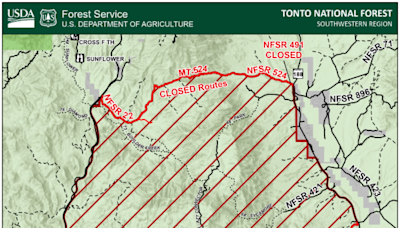Search results
- DictionaryRoad/rōd/
noun
- 1. a wide way leading from one place to another, especially one with a specially prepared surface which vehicles can use: "a country road"
- 2. a series of events or a course of action that will lead to a particular outcome: "he's well on the road to recovery"
The meaning of ROAD is roadstead —often used in plural. How to use road in a sentence. roadstead —often used in plural; an open way for vehicles, persons, and animals; especially : one lying outside of an urban district : highway…
- Overview
- Cretan stone roads
- Roads of Persia and Babylon
- Egypt
- Greece
- The Amber Routes
- The Roman roads
road, traveled way on which people, animals, or wheeled vehicles move. In modern usage the term road describes a rural, lesser traveled way, while the word street denotes an urban roadway. Highway refers to a major rural traveled way; more recently it has been used for a road, in either a rural or urban area, where points of entrance and exit for traffic are limited and controlled.
The most ancient name for these arteries of travel seems to be the antecedent of the modern way. Way stems from the Middle English wey, which in turn branches from the Latin veho (“I carry”), derived from the Sanskrit vah (“carry,” “go,” or “move”). The word highway goes back to the elevated Roman roads that had a mound or hill formed by earth from the side ditches thrown toward the centre, thus high way. The word street originates with the Latin strata (initially, “paved”) and later strata via (“a way paved with stones”). Street was used by the Anglo-Saxons for all the roads that they inherited from the Romans. By the Middle Ages, constructed roads were to be found only in the towns, and so street took on its modern limited application to town roads. The more recent word road, derived from the Old English word rád (“to ride”) and the Middle English rode or rade (“a mounted journey”), is now used to indicate all vehicular ways.
Modern roads can be classified by type or function. The basic type is the conventional undivided two-way road. Beyond this are divided roads, expressways (divided roads with most side access controlled and some minor at-grade intersections), and freeways (expressways with side access fully controlled and no at-grade intersections). An access-controlled road with direct user charges is known as a tollway. In the United Kingdom freeways and expressways are referred to as motorways.
Functional road types are local streets, which serve only adjacent properties and do not carry through traffic; collector, distributor, and feeder roads, which carry only through traffic from their own area; arterial roads, which carry through traffic from adjacent areas and are the major roads within a region or population centre; and highways, which are the major roads between regions or population centres.
At about this time the Minoans on the island of Crete built a 30-mile (50-km) road from Gortyna on the south coast over the mountains at an elevation of about 4,300 feet (1,300 metres) to Knossos on the north coast. Constructed of layers of stone, the roadway took account of the necessity of drainage by a crown throughout its length and even gutter...
The earliest long-distance road was a 1,500-mile route between the Persian Gulf and the Mediterranean Sea. It came into some use about 3500 bce, but it was operated in an organized way only from about 1200 bce by the Assyrians, who used it to join Susa, near the Persian Gulf, to the Mediterranean ports of Smyrna (İzmir) and Ephesus. More a track than a constructed road, the route was duplicated between 550 and 486 bce by the great Persian kings Cyrus II and Darius I in their famous Royal Road. Like its predecessor, the Persian Royal Road began at Susa, wound northwestward to Arbela, and thence proceeded westward through Nineveh to Harran, a major road junction and caravan centre. The main road then continued to twin termini at Smyrna and Ephesus. The Greek historian Herodotus, writing about 475 bce, put the time for the journey from Susa to Ephesus at 93 days, although royal riders traversed the route in 20 days.
In Babylon about 615 bce the Chaldeans connected the city’s temples to the royal palaces with the Processional Way, a major road in which burned bricks and carefully shaped stones were laid in bituminous mortar.
Herodotus credits the Egyptians with building their first roads to provide a solid track upon which to haul the immense limestone blocks used in the pyramids, and archaeological evidence indicates that such road building took place southwest of Cairo between 2600 and 2200 bce. The wheel arrived in Egypt at the relatively late date of about 1600 bce...
The early Greeks depended primarily on sea travel. There is evidence of the building of special roads for religious purposes and transport about 800 bce, but there is little evidence of substantial road building for travel and transport prior to the Roman system. The Greeks did build a few ceremonial, or “sacred,” roads, paved with shaped stone and...
During the 2nd millennium bce, trade ways developed in Europe. One route, for example, ran between Italy and Spain via Marseille and nearby Heraclea, close to present-day Avignon, France. Such ways were used for the movement of flints from Denmark, freestone from Belgium, salt from Austria, lead and tin from England, and amber from northern Europe. By about 1500 bce many of the ways in eastern and central Europe had linked together into an extensive trading network known as the Amber Routes. Four routes have been identified, the first from modern Hamburg, Germany, southwestward by dual routes through Cologne and Frankfurt to Lyon and Marseille. The second also passed from Hamburg south to Passau on the Danube and then through the Brenner Pass to Venice. The third began at Samland on the East Prussian coast (where amber is still found), crossed the Vistula River at Thorn, and thence continued southeastward through the Moravian Gate to Aquileia on the Adriatic. The fourth, the Baltic-Pontus road, followed the main eastern rivers, the Vistula, Saw, Sereth, Prut, Bug, and Dnieper.
While the Amber Routes were not roads in the modern sense, they were improved at river crossings, over mountain passes, and across wet and swampy areas. A few remnants of these roads survive today. They were constructed by laying two or three strings of logs in the direction of the road on a bed of branches and boughs up to 20 feet (6 metres) wide. This layer was then covered with a layer of transverse logs 9 to 12 feet in length laid side by side. In the best log roads, every fifth or sixth log was fastened to the underlying subsoil with pegs. There is evidence that the older log roads were built prior to 1500 bce. They were maintained in a level state by being covered with sand and gravel or sod. In addition, the Romans used side ditches to reduce the moisture content and increase the carrying capacity.
The greatest systematic road builders of the ancient world were the Romans, who were very conscious of the military, economic, and administrative advantages of a good road system. The Romans drew their expertise mainly from the Etruscans—particularly in cement technology and street paving—though they probably also learned skills from the Greeks (masonry), Cretans, Carthaginians (pavement structure), Phoenicians, and Egyptians (surveying). Concrete made from cement was a major development that permitted many of Rome’s construction advances.
The Romans began their road-making task in 334 bce and by the peak of the empire had built nearly 53,000 miles of road connecting their capital with the frontiers of their far-flung empire. Twenty-nine great military roads, the viae militares, radiated from Rome. The most famous of these was the Appian Way. Begun in 312 bce, this road eventually followed the Mediterranean coast south to Capua and then turned eastward to Beneventum, where it divided into two branches, both reaching Brundisium (Brindisi). From Brundisium the Appian Way traversed the Adriatic coast to Hydruntum, a total of 410 miles from Rome.
The typical Roman road was bold in conception and construction. Where possible, it was built in a straight line from one sighting point to the next, regardless of obstacles, and was carried over marshes, lakes, ravines, and mountains. In its highest stage of development, it was constructed by excavating parallel trenches about 40 feet apart to provide longitudinal drainage—a hallmark of Roman road engineering. The foundation was then raised about three feet above ground level, employing material taken from the drains and from the adjacent cleared ground. As the importance of the road increased, this embankment was progressively covered with a light bedding of sand or mortar on which four main courses were constructed: (1) the statumen layer 10 to 24 inches (250 to 600 mm) thick, composed of stones at least 2 inches in size, (2) the rudus, a 9-inch-thick layer of concrete made from stones under 2 inches in size, (3) the nucleus layer, about 12 inches thick, using concrete made from small gravel and coarse sand, and, for very important roads, (4) the summum dorsum, a wearing surface of large stone slabs at least 6 inches deep. The total thickness thus varied from 3 to 6 feet. The width of the Appian Way in its ultimate development was 35 feet. The two-way, heavily crowned central carriageway was 15 feet wide. On each side it was flanked by curbs 2 feet wide and 18 inches high and paralleled by one-way side lanes 7 feet wide. This massive Roman road section, adopted about 300 bce, set the standard of practice for the next 2,000 years.
The public transport of the Roman Empire was divided into two classes: (1) cursus rapidi, the express service, and (2) agnarie, the freight service. In addition, there was an enormous amount of travel by private individuals. The two most widely used vehicles were the two-wheeled chariot drawn by two or four horses and its companion, the cart used in rural areas. A four-wheeled raeda in its passenger version corresponded to the stagecoaches of a later period and in its cargo version to the freight wagons. Fast freight raedae were drawn by 8 horses in summer and 10 in winter and, by law, could not haul in excess of 750 pounds (340 kg). Speed of travel ranged from a low of about 15 miles per day for freight vehicles to 75 miles per day by speedy post drivers.
A road is a thoroughfare for the conveyance of traffic that mostly has an improved surface for use by vehicles (motorized and non-motorized) and pedestrians. Unlike streets, whose primary function is to serve as public spaces, the main function of roads is transportation.
Road definition: a long, narrow stretch with a smoothed or paved surface, made for traveling by motor vehicle, carriage, etc., between two or more points; street or highway.. See examples of ROAD used in a sentence.
ROAD meaning: 1. a long, hard surface built for vehicles to travel along: 2. If a vehicle is on the road, it is…. Learn more.
A road is a wide, usually paved path that's big enough for cars to travel on. There are some roads that are so long, you can follow them from one coast of the U.S. to the other. While some roads can be traveled by pedestrians, the word usually specifies a thoroughfare for vehicles, especially cars, trucks, and buses.
ROAD definition: 1. a long, hard surface built for vehicles to travel along: 2. If a vehicle is on the road, it is…. Learn more.






